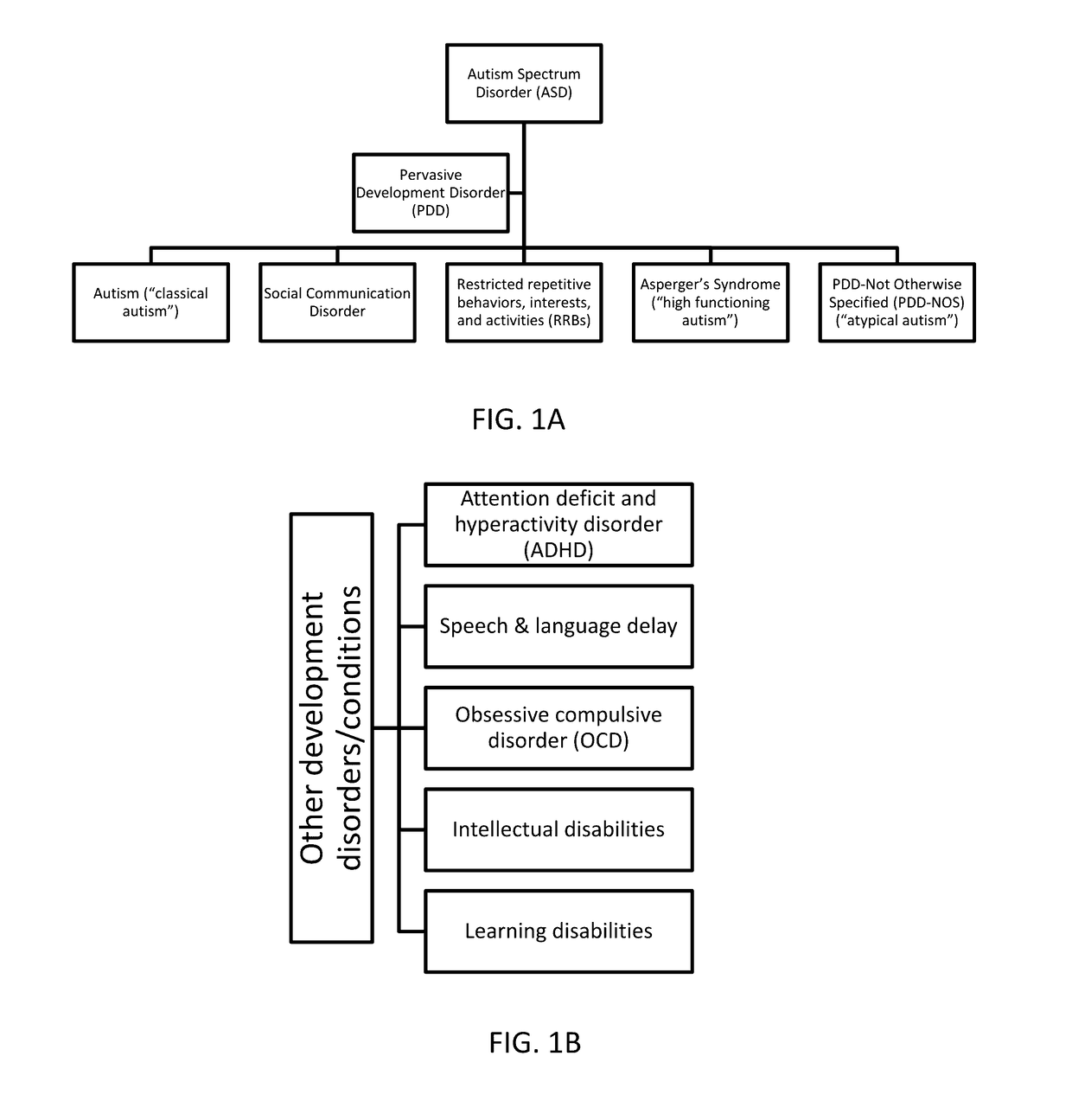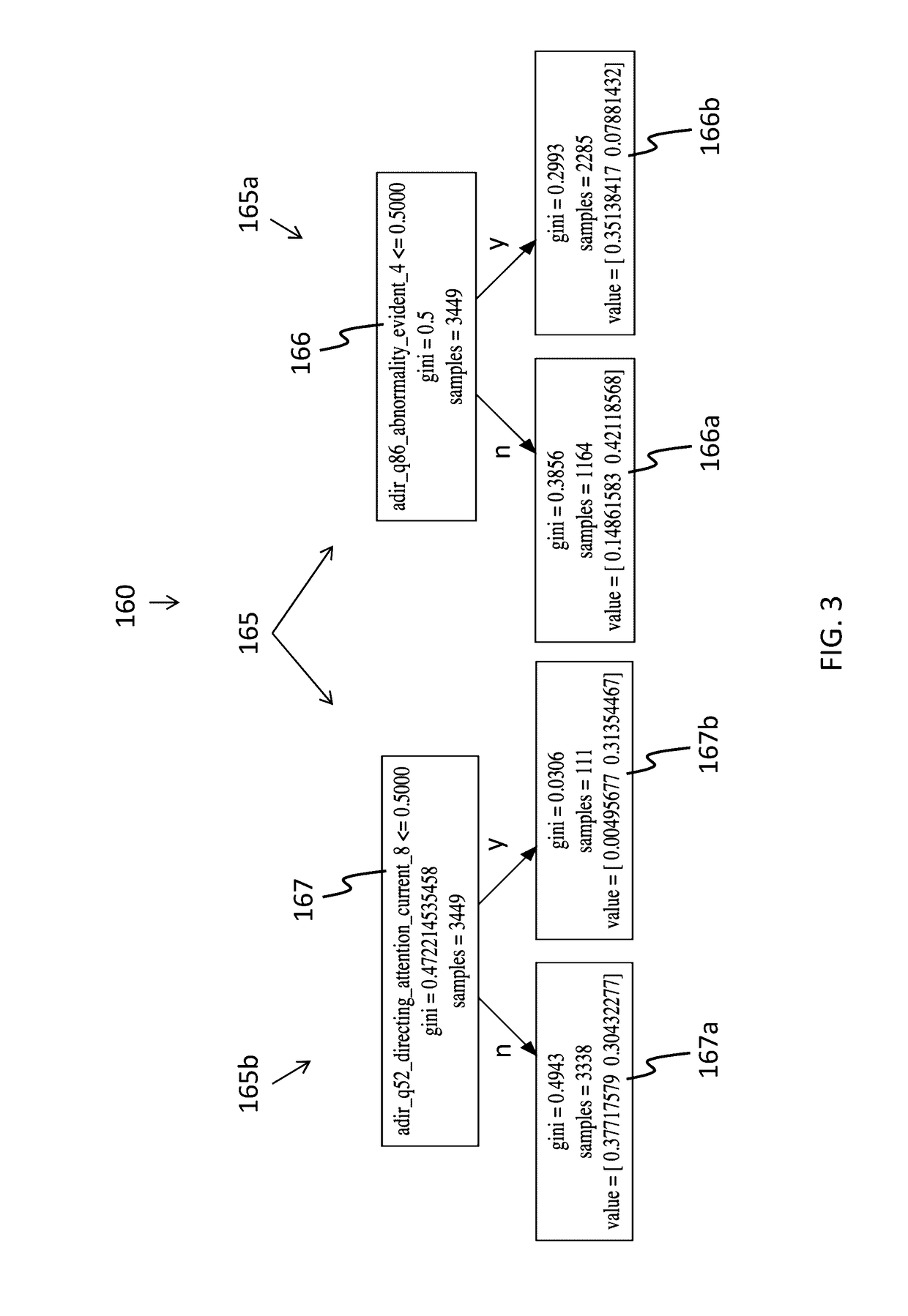Methods and apparatus to determine developmental progress with artificial intelligence and user input
a technology of artificial intelligence and developmental progress, applied in the field of methods and apparatus to determine the developmental progress of people with developmental disorders, can solve the problems of less than ideal amount of time, energy and money, and the prior method and apparatus for diagnosing people with developmental disorders can be less than ideal in at least some respects, so as to reduce the length and cost of the evaluation procedure, increase the sensitivity and specificity, and reduce the amount of time
- Summary
- Abstract
- Description
- Claims
- Application Information
AI Technical Summary
Benefits of technology
Problems solved by technology
Method used
Image
Examples
Embodiment Construction
[0073]While various embodiments of the invention have been shown and described herein, it will be obvious to those skilled in the art that such embodiments are provided by way of example only. Numerous variations, changes, and substitutions may occur to those skilled in the art without departing from the invention. It should be understood that various alternatives to the embodiments of the invention described herein may be employed. It shall be understood that different aspects of the invention can be appreciated individually, collectively, or in combination with each other.
[0074]The terms “based on” and “in response to” are used interchangeably with the present disclosure.
[0075]The term “processor” encompasses one or more of a local processor, a remote processor, or a processor system, and combinations thereof.
[0076]The term “feature” is used herein to describe a characteristic or attribute that is relevant to determining the developmental progress of a subject. For example, a “fea...
PUM
 Login to View More
Login to View More Abstract
Description
Claims
Application Information
 Login to View More
Login to View More - R&D
- Intellectual Property
- Life Sciences
- Materials
- Tech Scout
- Unparalleled Data Quality
- Higher Quality Content
- 60% Fewer Hallucinations
Browse by: Latest US Patents, China's latest patents, Technical Efficacy Thesaurus, Application Domain, Technology Topic, Popular Technical Reports.
© 2025 PatSnap. All rights reserved.Legal|Privacy policy|Modern Slavery Act Transparency Statement|Sitemap|About US| Contact US: help@patsnap.com



